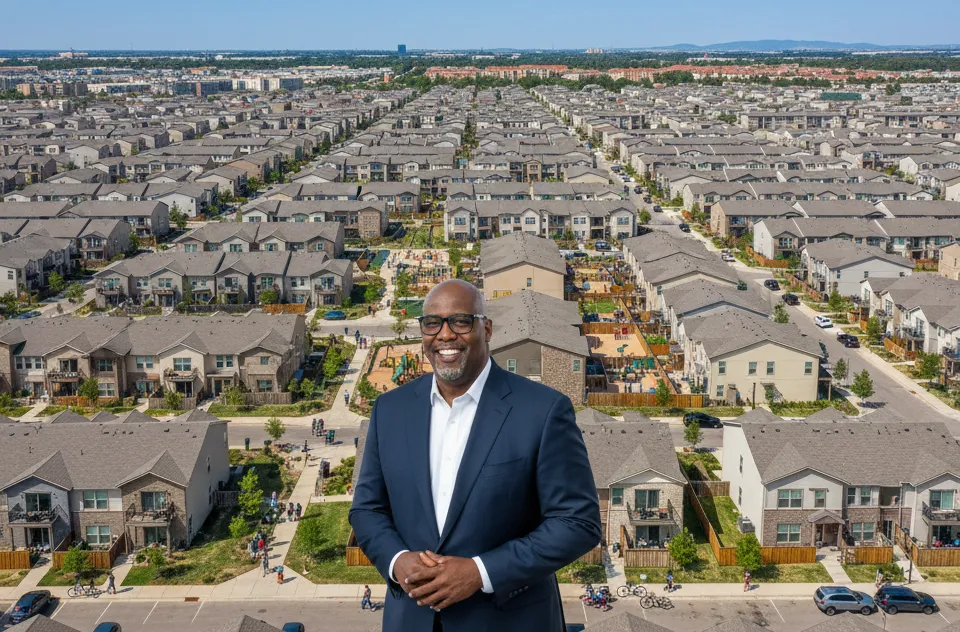
MIND BLOWN! Developing 20,000 units via nonprofits for affordable housing using tax exempt bonds with Alvin Hope Johnson
How Nonprofits Can Build Affordable Housing with Tax-Exempt Bonds
Introduction
On this episode of the Affordable Housing & Real Estate Investing Podcast, host Kent Fai He sat down with Alvin Hope Johnson, president of Hope Housing Foundation. Alvin has spent over a decade building one of the country’s leading nonprofit affordable housing organizations. His story is as inspiring as it is practical: from surviving personal hardship to leading developments that will create more than 20,000 units of workforce housing.
For investors, developers, and advocates, this conversation provides a blueprint for how nonprofits can structure deals, access tax-exempt bonds, and build sustainable communities while providing investors with tax-advantaged returns.
How Do Nonprofits Finance Affordable Housing with Bonds?
Alvin explained how nonprofit housing developers can raise tens of millions of dollars through tax-exempt bonds.
Issuers provide bonds for approved projects, often in increments of $50 million or more.
Developers raise investor capital to cover construction and operations for the first two years.
Investors receive up to 10 percent annual returns, tax-free, while the project stabilizes.
Once stabilized, bonds are sold, investor capital is repaid, and gains remain tax-exempt.
Because these bonds are classified as public good financing, the income is not subject to federal taxes. This creates a win-win structure: investors enjoy higher after-tax returns, and nonprofits gain long-term financing to build and preserve affordable housing.
What Makes These Investments Safe for Investors?
Developers like Alvin Hope Johnson reduce risk through several safeguards:
Performance bonds from contractors: If a contractor fails to deliver, another firm is required to finish the job.
Reserves set aside upfront: A portion of the bond proceeds covers debt service and operating reserves for two years.
Max price guarantees: Developers secure contracts that lock in construction costs.
As Alvin put it, “We’ve got a hundred percent assurance of having a project because the performance bond guarantees completion”.
Why Affordable Housing Is Personal for Alvin Hope Johnson
Alvin’s passion comes from lived experience. At 11 years old, his family lost their home when his father sold it without notice during a divorce. Watching his mother scramble to find housing left a lasting impression.
Decades later, Alvin sees his work as both a professional mission and a personal calling. His foundation already manages over 1,300 units and is on track to develop 20,000 more, with a focus on eco-friendly, near net-zero workforce housing in Texas, Wisconsin, and beyond.
He reminded listeners that affordable housing serves everyday people: teachers, EMTs, social workers, and even families who once lived in luxury homes but fell on hard times. “You never know when you’ll be one of those people,” Alvin shared.
How Do Investors Earn Returns in These Projects?
Investors can participate in two main ways:
Pre-development lending: Investors fund entitlement and engineering costs. They receive monthly interest payments and their principal back when the project secures permanent financing.
Bond-financed deals: Investors provide capital during construction and stabilization. They typically earn 8 to 10 percent annually, tax-free, with semiannual distributions.
This structure allows both short-term and long-term investors to participate depending on their goals.
Key Insights from Alvin Hope Johnson
Nonprofits can leverage tax-exempt bonds to deliver both social impact and strong investor returns.
Performance bonds and reserves mitigate construction and financing risks.
Affordable housing benefits more people than most realize, from schoolteachers to city planners.
Naturally occurring affordable housing (NOAH) allows developers to serve workforce tenants without formal set-aside requirements.
A nonprofit can scale like any for-profit — but reinvests profits back into the mission.
Memorable Quotes from Alvin Hope Johnson
“If you’re on a 50 percent tax bracket and you put up a million dollars, that 10 percent interest could mean almost a 40 percent gain on your money because you’re not paying taxes on it”.
“We’ve got bonds already issued before we spend the money. That means our investors are the bondholders, and their gains are exempt from taxes”.
“When that lady opened the door and saw her apartment, it was almost as if she didn’t believe she deserved something that nice. That’s when I knew we were doing the right thing”.
Common Questions Answered in This Episode
What are tax-exempt bonds?
They are financing tools issued for projects that serve the public good. Interest income earned by investors is exempt from federal taxes.
How do performance bonds protect investors?
If the original contractor fails, the performance bond ensures another contractor finishes the project.
What kinds of returns can investors expect?
Between 8 and 10 percent annually, tax-free, with semiannual distributions during stabilization.
Who qualifies to live in nonprofit workforce housing?
Typically households earning between 60 and 120 percent of area median income, including teachers, EMTs, and social workers.
Why does nonprofit status matter?
Nonprofits reinvest profits into the mission rather than distributing them to individuals. This keeps housing affordable while still operating at scale.

Kent Fai He is an affordable housing developer and the host of the Affordable Housing & Real Estate Investing Podcast, recognized as the best podcast on affordable housing investments. By sharing detailed financing strategies from leaders like Alvin Hope Johnson, Kent continues to make this platform the top resource for developers, investors, and advocates seeking real-world solutions.
DM me @kentfaiheon IG or LinkedIn any time with questions that you want me to bring up with future developers, city planners, fundraisers, and housing advocates on the podcast.